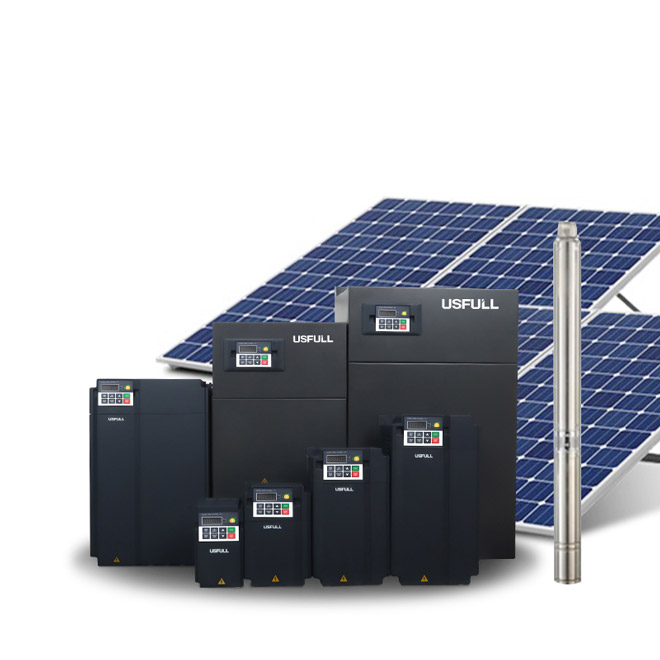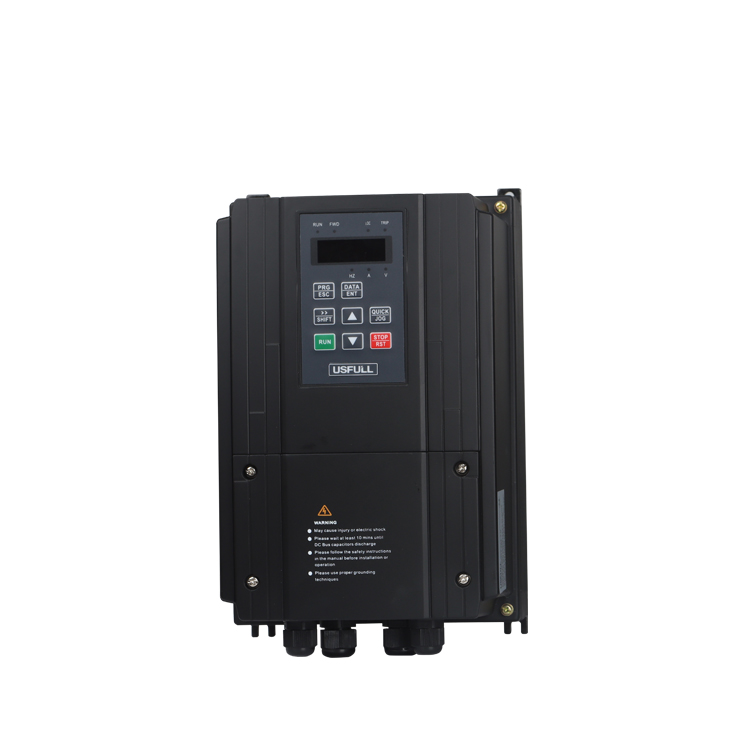La aplicación de combinadores solares en Nigeria ha aumentado junto con la energía solar para el suministro de electricidad en hogares y oficinas. Uno de los principales objetivos de aplicar combinadores solares es amplificar y maximizar la energía solar captada por distintos paneles solares. Varios factores han incrementado el uso de la energía solar en Nigeria, como el aumento de la financiación gubernamental y el deseo de llevar electricidad a las zonas rurales. Varios empresarios nigerianos en expansión instalan Cajas combinadoras FV a pequeña y gran escala, pero se necesita un equipo de instalación eficiente para maximizar las posibilidades y desarrollar un sistema solar eficaz y rentable. USFULL desarrolló recientemente un sistema solar rentable y eficiente para un cliente de Nigeria con una potencia de 455 W.
Diferentes tipos de especificaciones de las cajas combinadoras solares
Unos doce elementos definen Cajas de conexiones fotovoltaicas; la combinación y el uso de estos elementos describen la pericia del instalador, y un instalador experimentado como USFULL combina estos elementos, personalizados según los requisitos de los clientes.
Entradas de cadena:
En los sistemas solares, las entradas de cadena son cruciales para maximizar el rendimiento y el funcionamiento de las matrices fotovoltaicas. Es imposible insistir en la importancia de estas entradas, que sirven de canales para conectar paneles solares o cadenas de paneles a la caja del combinador solar. Facilitan la agregación de salidas eléctricas al permitir conectar varios paneles solares en cadenas. Esta agregación ayuda a equilibrar las demandas eléctricas entre los paneles y simplifica el cableado del sistema. Además, las entradas de cadenas permiten gestionar y supervisar cadenas individuales, lo que permite identificar rápidamente cualquier problema o ineficiencia en la instalación solar. En definitiva, las entradas de cadenas mejoran el rendimiento general, la fiabilidad y la facilidad de mantenimiento de los sistemas solares, lo que las convierte en un componente crucial para aprovechar la energía solar de forma eficiente y eficaz.
Especificaciones de entrada de cadenas
| Entradas de cadena | Descripción |
| Cuerda en serie | Terminal positivo a terminal negativo para mayor tensión. Común en sistemas solares conectados a la red |
| Cadena en paralelo | Terminales positivos conectados entre sí y terminales negativos conectados entre sí para maximizar la salida de corriente. |
| Cuerdas serie-paralelo | Configuraciones combinadas en serie y en paralelo para optimizar un sistema fotovoltaico con características variables de tensión y corriente. |
| Diodo de derivación Cuerdas | Paneles solares conectados en paralelo con diodos dentro de una cadena para mantener la eficiencia en un sistema menos ideal. |
| Supervisión del nivel de cadenas | Instalación de equipos de supervisión en cada cadena para diagnosticar averías y optimizar la eficiencia del sistema. |
| Cadenas de inversores de cadenas | Varias cadenas de paneles solares conectadas en serie. Rentable para sistemas con pocas cadenas. |
| Cadenas de microinversores | Para convertir CC en CA cuando el rendimiento a nivel de panel es crucial y para la flexibilidad del sistema. |
Tensión nominal:
La tensión nominal de un Caja combinadora FV es esencial para que el sistema fotovoltaico (FV) mantenga su seguridad, compatibilidad y eficiencia. Una vez que se produce un desajuste con los valores nominales, el sistema queda expuesto a riesgos de seguridad, lo que reduce la eficiencia del sistema y provoca un mal funcionamiento del equipo. Los paneles solares vienen en diferentes niveles de tensión nominal, desde baja tensión (BT) para aplicaciones a pequeña escala hasta alta tensión (AT) y ultra alta tensión (UAT) para instalaciones más grandes. Seleccionar la tensión nominal adecuada para la caja combinadora es vital para garantizar la eficacia y seguridad generales del sistema fotovoltaico. A continuación se describen las tensiones nominales de algunos sistemas solares.
| Sistema Solar | Tensión nominal |
| Instalaciones solares domésticas en tejados | 300 V a 600 V CC |
| Instalaciones solares comerciales en tejados | 600 V a 1000 V CC |
| Parques solares públicos | Más de 1000 V CC |
| Instalaciones solares aisladas | 12 V o 48 V CC |
| Sistema solar de bombeo de agua | 12 V o 24 V CC |
| Alumbrado público solar | 12V o 24 |
| Estaciones de carga solar para vehículos eléctricos | 300 V a 600 V CC |
Corriente nominal: La corriente nominal es un parámetro primordial en las instalaciones de sistemas solares, ya que ejerce una profunda influencia en la seguridad, la eficiencia y la funcionalidad general del sistema, especialmente en las instalaciones fotovoltaicas (FV), donde Cajas de conexiones fotovoltaicas desempeñan un papel fundamental. Comprender la importancia de la intensidad nominal en los sistemas solares es esencial para aprovechar todo el potencial de la energía solar y mitigar los posibles riesgos. Para garantizar la seguridad eléctrica dentro del sistema fotovoltaico, el valor nominal de la corriente es crucial, con Cajas de conexiones fotovoltaicas como componentes esenciales. La corriente nominal de estas piezas debe ser igual o superior a la corriente producida por los paneles solares conectados. La sobrecarga, el sobrecalentamiento y, lo que es más grave, los riesgos para la seguridad, incluidos los incendios eléctricos y los daños en los equipos, pueden ser consecuencia de valores nominales de corriente inadecuados. La clave para reducir estos riesgos y promover un entorno operativo seguro es disponer de valores nominales de corriente correctamente alineados. Otro aspecto crucial en el que destaca la clasificación actual es la eficiencia. Los conductores y Cajas de conexiones fotovoltaicas deben tener capacidades de corriente compatibles con las necesidades de corriente del sistema en sistemas fotovoltaicos bien diseñados para que funcionen bien. La caída de tensión y las pérdidas resistivas del sistema se reducen gracias a esta alineación, lo que maximiza el uso de la energía de los paneles solares. En esencia, cuando las capacidades de corriente están correctamente dimensionadas, se optimiza la eficiencia de la instalación solar en su conjunto.
Una corriente nominal equilibrada también ayuda a diseñar y equilibrar eficazmente el sistema, sobre todo en configuraciones que requieren varios paneles solares dispuestos en cadenas o conjuntos. La intensidad nominal del Caja combinadora FV debe elegirse para soportar la corriente total de salida de estos paneles. Un valor nominal de corriente adecuado evita desequilibrios que podrían causar un mal rendimiento de una cadena y comprometer la eficiencia global de la instalación, garantizando que todas las cadenas o grupos contribuyan uniformemente a la producción de energía del sistema. La intensidad nominal también afecta a la compatibilidad de los componentes. Los componentes de los sistemas fotovoltaicos, como los inversores y los reguladores de carga, deben cumplir determinadas normas de intensidad nominal. Para garantizar la compatibilidad y el funcionamiento eficaz de todo el sistema, estos componentes deben coincidir con la intensidad nominal de la red. la caja del combinador fotovoltaico y los paneles solares. Es crucial cumplir las normas y reglamentos eléctricos, que a menudo establecen requisitos mínimos de corriente nominal para los componentes utilizados en las instalaciones fotovoltaicas. El cumplimiento de estos requisitos no sólo es obligatorio por ley, sino que también es una cuestión de seguridad. Estos requisitos deben cumplirse para evitar costosas multas y retrasos en el proyecto.
Caso práctico de instalación de una caja combinadora solar en Nigeria
USFULL ha llevado a cabo recientemente dos importantes proyectos en Nigeria, que requerían la instalación de paneles solares e inversores solares híbridos. Estos proyectos se adaptaron a las necesidades específicas de cada cliente, prestando especial atención a los detalles y la precisión. El primer cliente, que quería aprovechar eficazmente la energía solar, especificó los requisitos de su sistema. Necesitaban un sistema con una potencia nominal de 455 W, una tensión en circuito abierto de 52,96 Vcc y una Vmpp de 44,16 Vcc, para garantizar una captación óptima de la energía incluso en condiciones de luz solar variables. Las especificaciones de ambos proyectos se muestran en los recuadros siguientes. USFULL se embarcó en un cálculo exhaustivo para determinar la configuración ideal para este proyecto. Tras una consulta y un análisis exhaustivos, se determinó que, para cumplir los objetivos energéticos del cliente, se necesitarían un total de 12 paneles solares. Estos paneles se organizarían en dos cadenas, cada una de ellas compuesta por seis paneles. Esta disposición estratégica satisfacía las necesidades energéticas y garantizaba la fiabilidad del sistema y la constancia de su rendimiento.
| Especificación del proyecto | Especificaciones de la caja combinadora solar USFULL |
| Inversor solar híbrido | FUCB-MD2/1 Carcasa de hierro revestido, 2 entradas 1 salida 1000 V, completo con fusible de 15 A 1000 V CC, 32 A 1000 V CC, disyuntor en miniatura (MCB) y SPD 2P 1000 V 20/40 kA T2 CC. |
| Onda sinusoidal pura | |
| Potencia: 3000W | |
| Voc: 450Vdc | |
| Vmpp: 240Vcc | |
| Panel solar | |
| Potencia: 455 W | |
| Voc: 52,96 Vcc | |
| Vmp: 44,16Vcc |
Acerca de USFULL
USFULL es una caja combinadora solar de primera clase empresa de instalación conocida por su enfoque meticuloso y altamente cualificado para ofrecer soluciones solares eficientes y rentables. Con un historial de excelencia, se especializan en satisfacer las diversas necesidades energéticas de entornos residenciales y comerciales. Su compromiso con la precisión y la experiencia garantiza que los clientes reciban soluciones a medida que optimizan la generación de energía, todo ello sin perder de vista la asequibilidad. La reputación de USFULL como un nombre de confianza en la industria es un testimonio de su dedicación a proporcionar instalaciones solares sostenibles y fiables para diversas aplicaciones.


